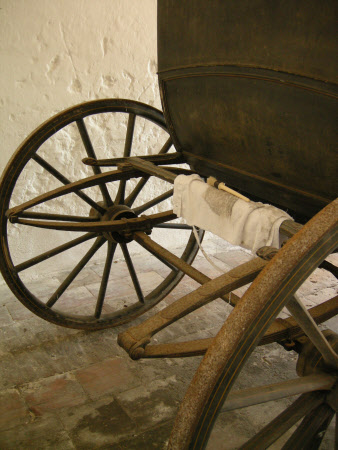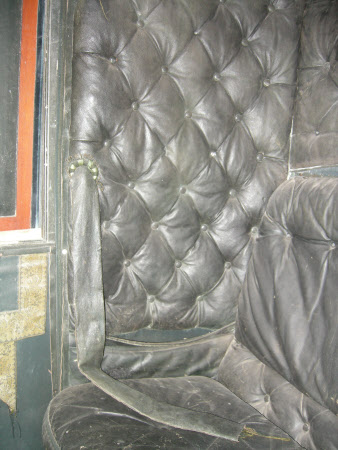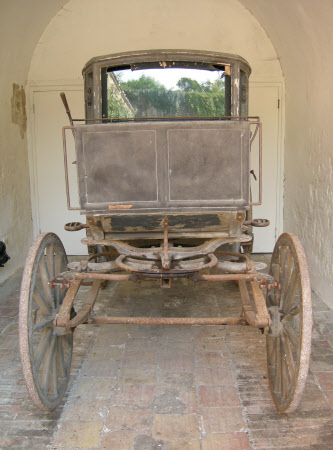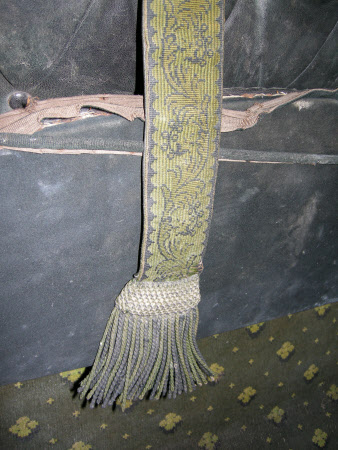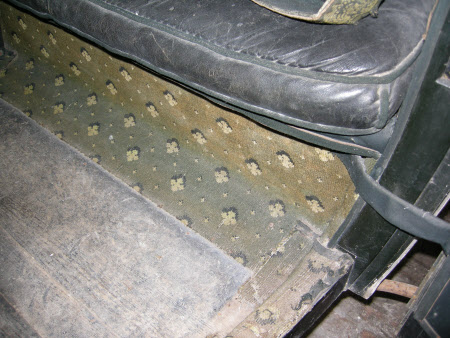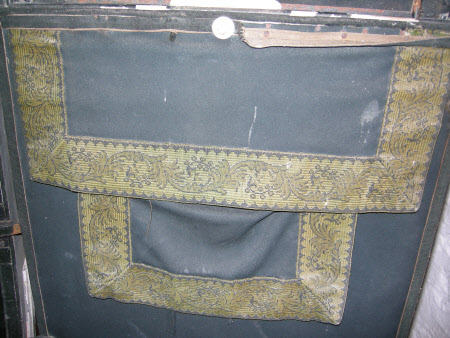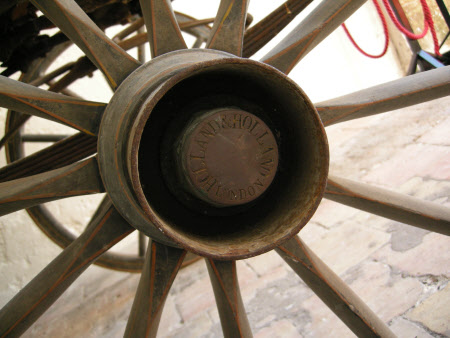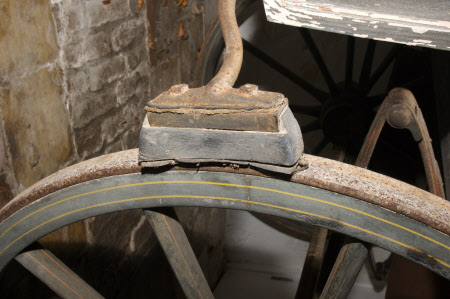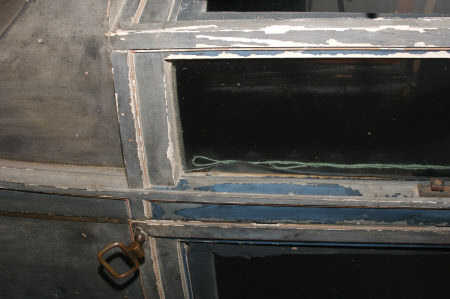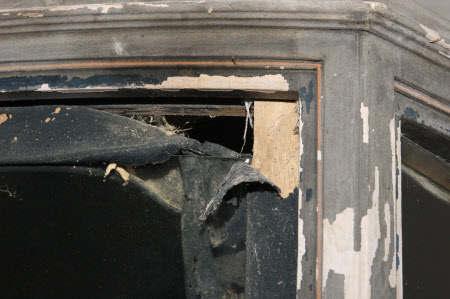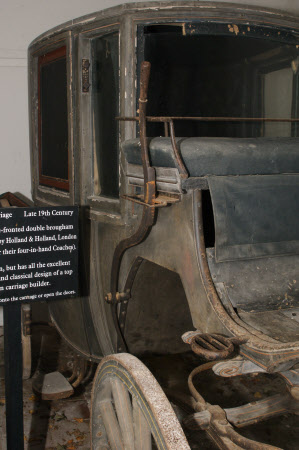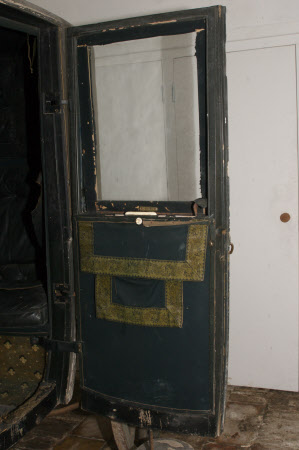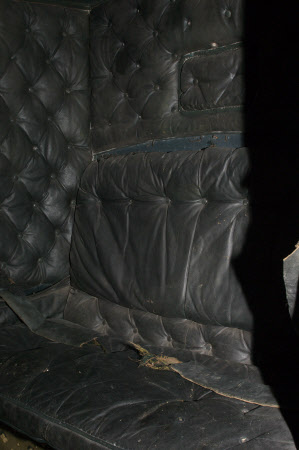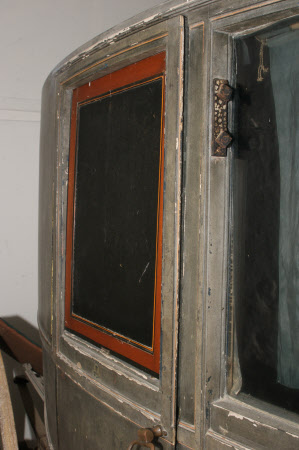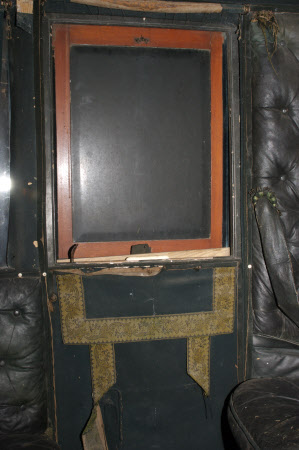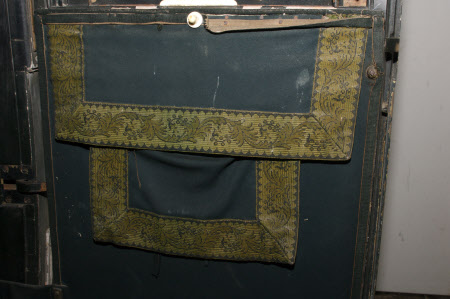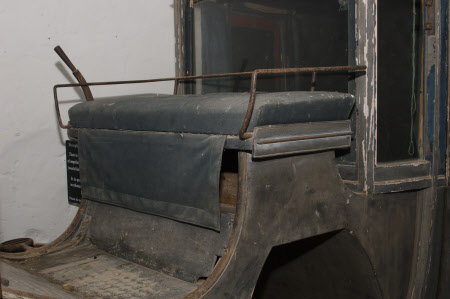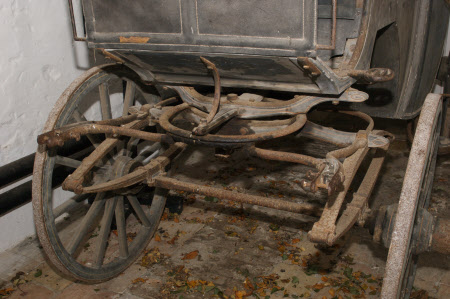Double brougham
Holland and Holland
Category
Carriages & other vehicles
Date
Unknown
Materials
Painted wood body with wool cloth upholstery and four iron shod wheels.
Measurements
199.5 x 343 x 162.5cm (6ft 6 1/2in x 11ft 3in x 5ft 3 3/4in)
Place of origin
London
Order this imageCollection
Florence Court, County Fermanagh
NT 631395
Caption
The first brougham was commissioned in 1837 by Lord Brougham (1778-1868). He wanted “a refined and glorified street cab, which would make a convenient carriage for a gentleman…closed and intimate thus allowing the occupants to conduct a private conversation”. It was an instant success.
Summary
Double Brougham built by Holland and Holland of London. Double Brougham (four wheels) for a single or pair of horses. The body is of an angular profile and sprung on elliptic springs. Coachman’s seat with single seat rail. There is a permanently fitted heel board. The roof and upper panels are leather covered. Inside the front seat hinges up when it is not in use. A hole is in the front rail for a coachman’s communication cord with eyes and pulley beneath the roof lining. Upholstered in blue wool cloth. Painted in a livery of blue and black with yellow lining.
Full description
The first brougham was commissioned in 1837 by Henry Peter Brougham (1778-1868) first Baron Brougham and Vaux, Whig politician, lawyer and Minister of State. He wanted “a refined and glorified street cab, which would make a convenient carriage for a gentleman”, unlike his usual form of transport, probably a town coach or chariot, both far larger and heavier. He designed a carriage that would be light and compact, needing just one horse and a coachman – ideal for use on busy streets. The body would be low for easy access and should carry two people and be “closed and intimate thus allowing the occupants to conduct a private conversation whilst travelling”. His ideas were rejected by his usual coachbuilder so he took them to another, Robinson & Cook, just round the corner. They agreed to build the vehicle and it was called the Brougham by his Lordship’s express permission. Lord Brougham’s brainchild was an instant success and, within a few years, broughams were being built in vast numbers wherever carriages of Western European style were used. They were particularly popular with professional and middle class families, and became the everyday carriages of the wealthy and the aristocracy. A Double Brougham differs slightly from the Single Brougham in that it has a small fold down seat at the front of the interior of the carriage. This example is conventional but very high quality by a premier London builder Holland & Holland who were world famous for four-in-hand coaches.
Marks and inscriptions
On front nearside axle cap.: HOLLAND & HOLLAND LONDON On the fron offside axle cap.: HOLLAND & HOLLAND LONDON On the rear nearside axle cap.: HOLLAND & HOLLAND LONDON On the rear offside axle cap.: HOLLAND & HOLLAND LONDON
Makers and roles
Holland and Holland, coach builder

